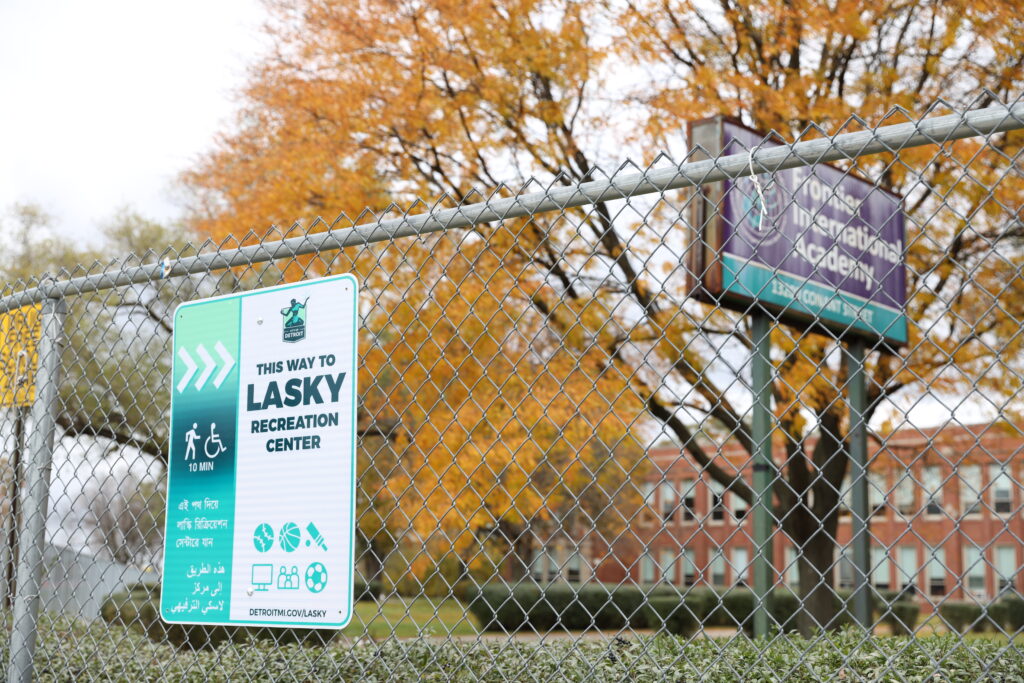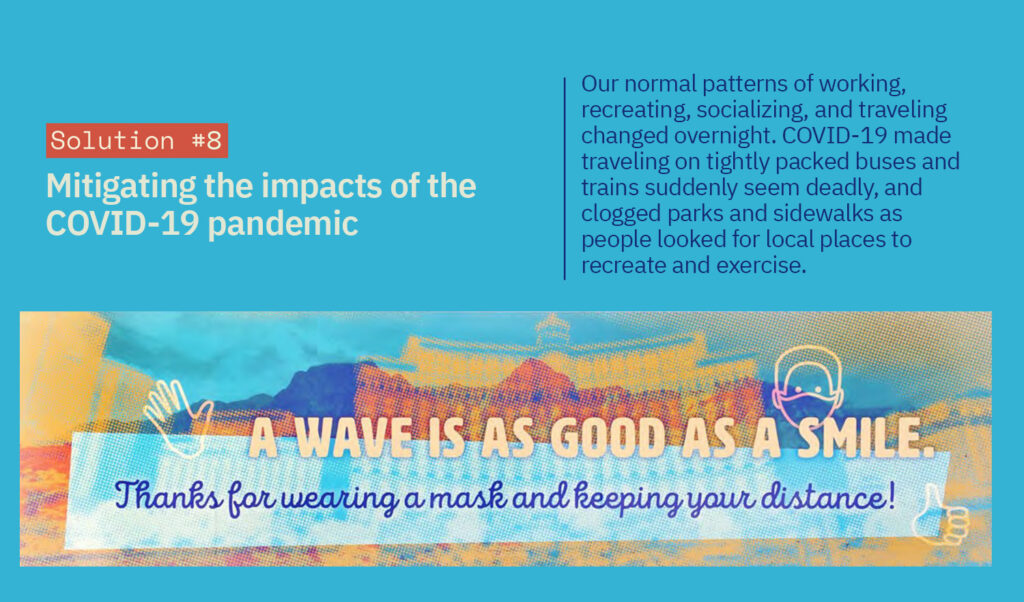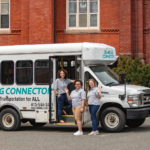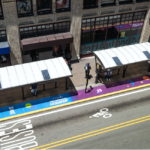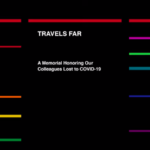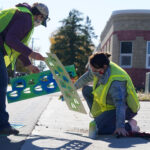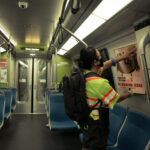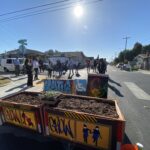As part of the Arts & Transportation Rapid Response initiative, the City of Detroit worked with Detroit-based designer Ndubisi Okoye to help bridge the first- and last-mile gaps between bus stops and the city’s recreation centers that are providing crucial resources during COVID-19. Okoye designed a set of welcoming, colorful wayfinding signage to guide residents and provided a possible template for creating a productive relationship with an artist in the future.
The challenge
Detroit has been hit particularly hard by COVID-19 with one of the highest mortality rates in the country, compounding existing public health issues and complicating efforts to provide access to basic services. Throughout the pandemic, the City of Detroit has used its recreation centers to provide access to critical resources such as food, employment resources, cooling centers, and other programming for vulnerable community members, many of whom are accessing these centers for the first time during the pandemic.
Among large U.S. cities, Detroit is considered one of the least dense with housing, jobs, and food spread out throughout the city. This makes getting around more difficult especially for the quarter of its population who rely on transit, biking, walking, and rolling to access essential services and places. The city’s recreation centers are spread around the city but often just far enough from bus stops that they can be difficult to find. To bridge the gaps between bus stops and the nearby recreation centers, the City of Detroit sought to partner with an artist to pilot eye-catching wayfinding to guide residents to resources.
The project
With help from Forecast Public Art, Smart Growth America selected and hired Detroit-based designer Ndubisi Okoye to create welcoming wayfinding to guide Detroiters to nearby recreation centers and resources.
Considering the short timeline of the project and hopes of replicating the wayfinding in the future, Okoye and the City of Detroit decided to focus their efforts on wayfinding for one recreation center. In partnership with the Detroit’s Planning Department, Department of Public Works, and Lasky Recreation Center staff, Okoye designed a set of wayfinding signs that would be placed along the half-mile route separating the bus stop and Lasky that could help connect people in the neighborhood with the resources at Lasky. Okoye worked with the city staff to collect community feedback to inform the final sign design. In an effort to make the signs stand out from other city signage, Okoye used bold colors and design techniques as well as spray-painted arrow directions on the ground beneath the sign. To increase accessibility of the signs and reinforce that all are welcome, the signs feature messages written in Bengali, Arabic, and English and simple symbols illustrating the resources available at Lasky.
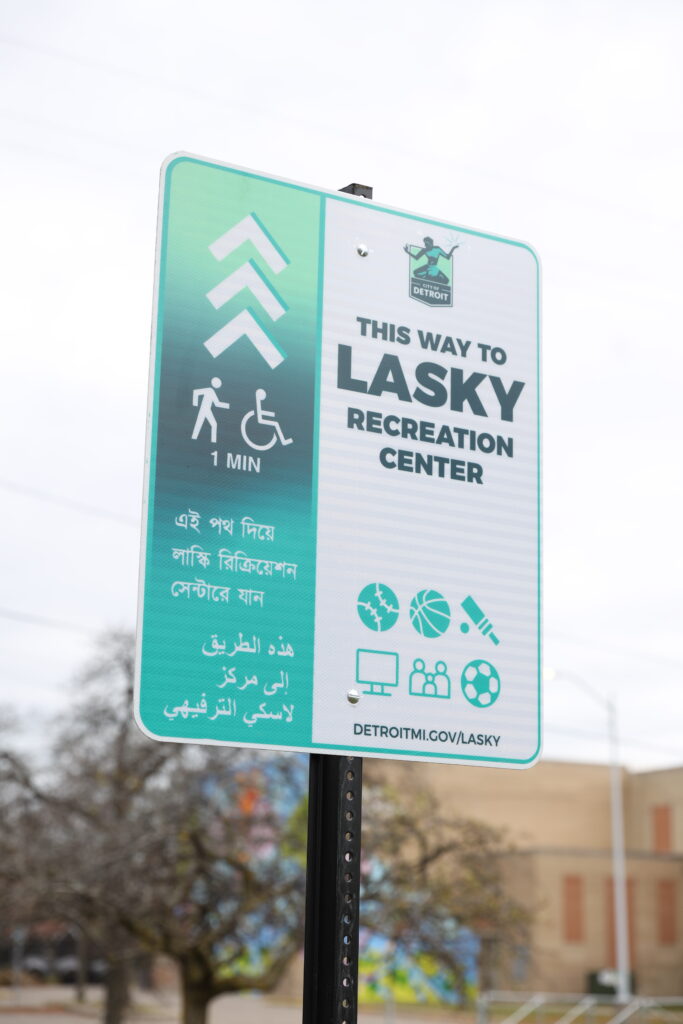
Photo: Bre’Ann White 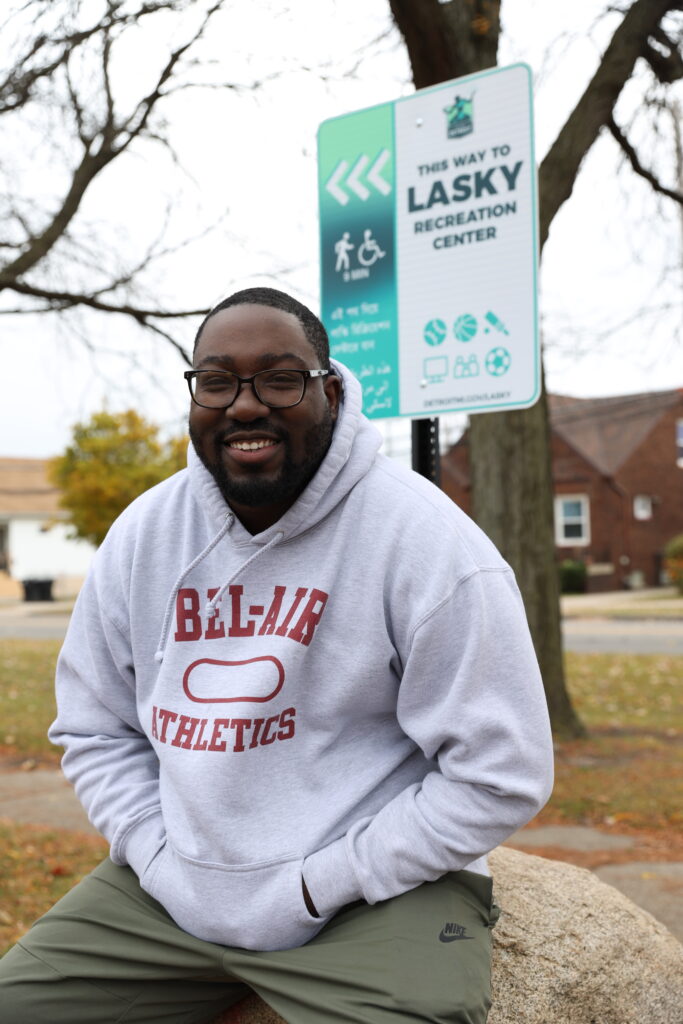
Photo: Bre’Ann White
Project team:
- Ndubisi Okoye, Artist
- Samuel Krassenstein, Transportation and Infrastructure Advisor at City of Detroit
- Shelby Howard, Urban Planner at Detroit Planning and Development Department
- Erika Linenfelser, Mobility Planner at Detroit Department of Public Works
- Katherine Braggs, Lasky Recreation Center Supervisor
The results
Thanks to the successful partnership between Okoye and the city, there is a set of 17 beautifully-designed signs in the ground outside of Lasky Recreation Center that are directing residents to crucial resources during COVID-19. Indirectly, the city developed a new process for designing future wayfinding that connects residents to other crucial city resources.
For cities around the country seeking to launch similar wayfinding initiatives, consider the following reflections from the City of Detroit and Okoye’s work:
- Keep your wayfinding simple and accessible, but make it stand out. Wayfinding should clearly communicate the message and ensure the viewer can reach their destination. It should be accessible and stand out from other signage. In the case of Detroit, these signs use symbols, multiple languages, and bold colors and design to achieve this. Signs were placed prominently along a walking route and were paired with spray-painted arrows in between signs to guide pedestrians to the Lasky Recreation Center.
- Take the time to identify all potential stakeholders, guidelines, and approval processes. With such a short timeline, it’s more difficult to identify every person, process, and guidance that needs to be involved. Take the time to think through the internal and external stakeholders who should be consulted and who will need to approve the final product. Consider all the design guidelines and standards that might need to be taken into consideration—this is particularly important for permanent projects. Most importantly, stay flexible with your timeline and build in buffer time at the end of the project to ensure that last-minute changes can be made.
“Lasky Recreation Center was trying to achieve awareness and let the community know that Lasky is here to serve.”
-Katherine Braggs, Lasky Recreation Center Supervisor
This project was part of Smart Growth America’s Arts & Transportation Rapid Response, an initiative for transportation agencies looking to creatively and quickly address pandemic-related transportation challenges. You can read about the other projects that were a part of this initiative here.
Key Partners: City of Detroit, Ndubisi Okoye, Smart Growth America, Forecast Public Art

